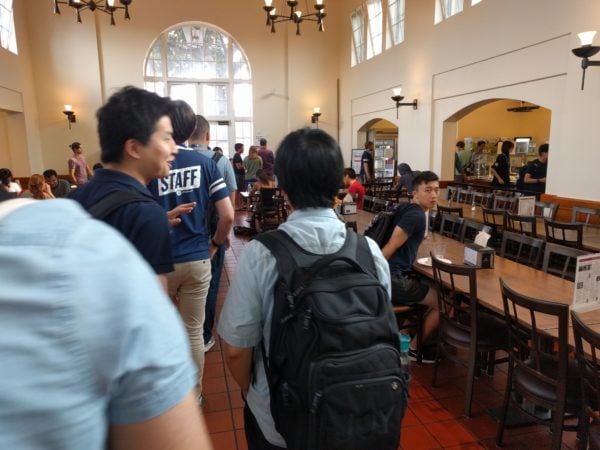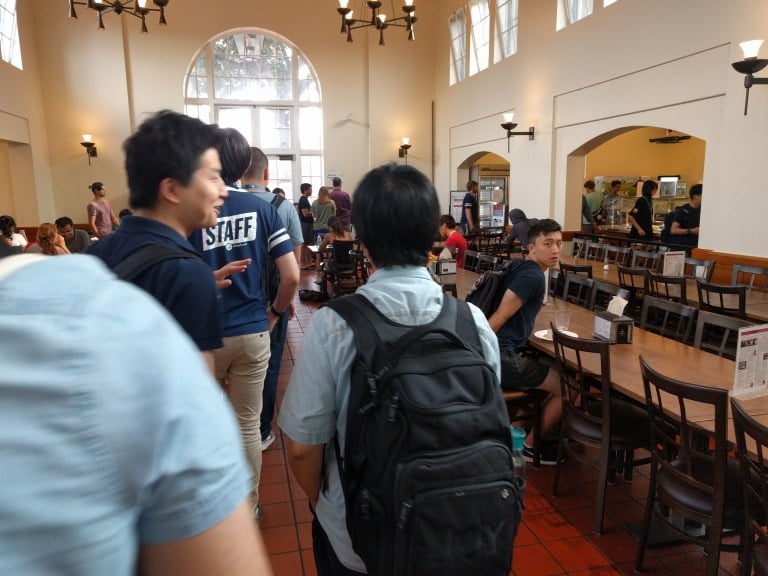During the summer, students with red summer session lanyards seem to take over campus: these students come from all around the world to live and breathe the Stanford experience and to get the opportunity to take a condensed quarter course with renowned Stanford professors. Some are high schoolers, but others are undergraduate and graduate students from both Stanford and colleges and universities across the globe.
“I’m from Redwood City, but it was a totally different planet just being able to know that you’re where Supreme Court members or John F. Kennedy once stood,” said Jesús Mancilla, a senior in high school. “It’s pretty breathtaking.”
The Summer Session not only gives students the opportunity to study on Stanford’s historic campus, but it also offers a wide range of courses for students to partake in. With over 170 courses available in 40 departments, students have the opportunity to pursue their passions, try new subjects or take classes that may not be available at their schools. Francesca Vescia, a sociology major and rising senior at Macalester college in Minnesota, is taking a sociology course that is part of the Stanford Human Rights intensive.
“Human Rights isn’t exactly sociology, but it has some sociology and is an interesting opportunity to try something different academically that I haven’t really studied at my college,” Vescia said.
During the summer, students, especially high schoolers, can both enhance their knowledge with college-level classes and experience the college environment.
“I took philosophy courses—‘Introduction to Ethics’ and ‘Introduction to Modern Philosophy’—because even though I like philosophy, I’ll never get to take another philosophy course in a college setting,” said Phoebe Shi, a rising high school junior from Beijing who attends a boarding school in Massachusetts. “I’m also taking economics because I really like it and wanted to learn it in a college setting. I want to mainly explore my interests and see what college courses are really like.”
Although individual class sizes are smaller during the Summer Quarter, the campus is still full of students attending the Summer Session or one of the various programs the University offers. According to the Summer Session website, approximately 2,500 matriculated and visiting students are enrolled.
“In Massachusetts, my school doesn’t exceed 400 students,” Shi said. “In this program, I think there are more than 500 [high school] residential students. It’s really cool because I sit with different people everyday. I get to meet a lot of new kids from backgrounds I [had] never even imagined before.”
Coming from a small liberal arts college, Vescia has an interesting perspective on what it feels like to operate in a small learning environment.
“I really appreciate the balance [during summer session] between feeling like my classes are small enough that I have a sense for my classmates and my professors but also large enough that you know we are getting a lot of people from a lot of different places with different perspectives,” Vescia said.
The diversity that comes with people coming from many different backgrounds is a common appreciation among summer session students.

“I think one of the things I am appreciating about [Stanford] the most thus far is the fact that it’s diverse, and one of those main forms of diversity is age diversity,” Vescia said. “I have people in my class who are grad students in their 20s, I have a cancer surgeon who is also auditing a course, and [I also] see people in their 60’s. There are also high school students who want to get a head start.”
From taking quick-paced collegiate courses to adjusting to the sheer size of the campus, visiting students often have to get accustomed to Stanford’s academic and cultural environment.
“I think the most difficult adjustment has been the independence, particularly that of the learning environment,” said Cameron Brown, a rising high school senior from Piqua, Ohio.
In Brown’s experience, high school teachers often work more closely with students and teach them every concept; however, in college, students are expected to do research themselves and learn more independently and need to work harder to learn the concepts.
Summer Session students have the opportunity to study in Stanford’s unique learning environment, and often take away important skills and experiences.
Mancilla initially just hoped to gain the experience of studying at Stanford. “But, I think being at Stanford and studying in the environment that it provides, I definitely gained more appreciation for scholastics and education.”
Contact Eshani Mehta at eshani.mehta ‘at’ gmail.com and Lauren Traum at 19ltraum ‘at’ castilleja.edu
